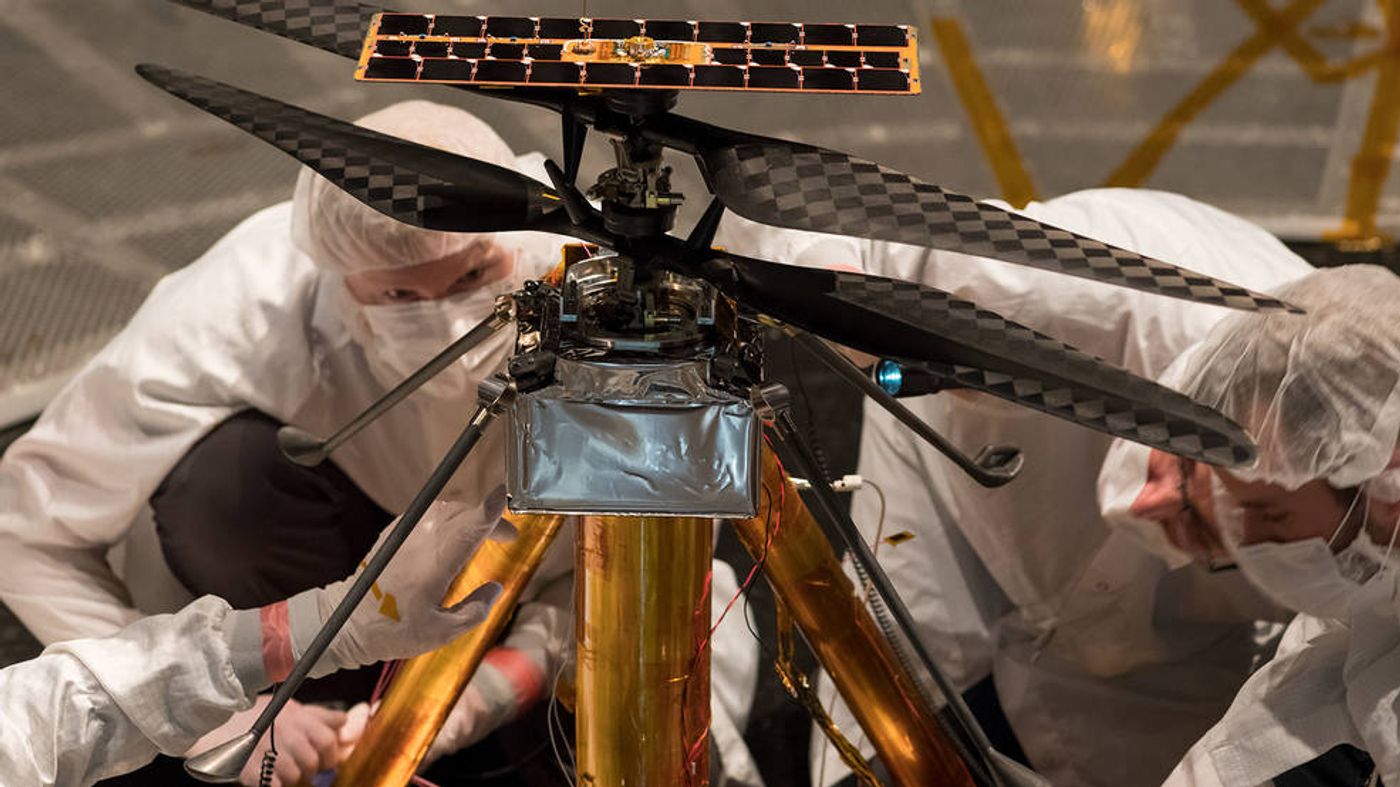Mini Helicopter Designed for Martian Exploration Proves Itself to Engineers
When NASA’s Mars 2020 rover finally makes it to Mars, it’ll be tasked with more than just moving around on the red planet’s surface like other rovers before it. The space agency plans to augment the rover’s ground-based exploration with the help of aerial surveys, which will be conducted by way of a miniature helicopter that will hitch a ride with the Mars 2020 rover.
Image Credit: NASA/JPL-Caltech
Mars’ atmosphere and climate are much different than what we’re accustomed to here on Earth. NASA approximates that the red planet’s atmosphere is only 1% the density of ours. Furthermore, Mars' temperatures sometimes dip to minus 130º Fahrenheit (-90º Celsius). Given the circumstances, NASA couldn’t just pack any small helicopter into the Mars 2020 package and call it good; instead, doing so necessitates strenuous testing in the lab to ensure that such a flying machine can handle Mars’ adverse environmental conditions.
To do this, NASA engineers conducted test flights with an engineering model of their Mars 2020 helicopter inside of a specially-designed vacuum chamber that measures 25 feet (7.62 meters) wide. The chamber then sucked out all the nitrogen, oxygen, and other gasses, and replaced it with carbon dioxide to simulate Mars’ thin atmosphere. But there was another factor that needed to be considered: Mars’ weaker gravitational footprint.
"Getting our helicopter into an extremely thin atmosphere is only part of the challenge," elucidated Teddy Tzanetos, one of the test conductors that helped with the Mars helicopter concept validation. "To truly simulate flying on Mars we have to take away two-thirds of Earth's gravity because Mars' gravity is that much weaker."
Related: Learn about the advanced technologies that are being packed into the Mars 2020 rover
To help simulate the weak gravity, the engineers attached a motorized lanyard to the top of the helicopter to impose a constant tug on the vehicle and work as a gravity offload mechanism. Upon firing everything up for the first time, the helicopter successfully hovered two inches above the ground without interruptions for at least one full minute.
"The gravity offload system performed perfectly, just like our helicopter," Tzanetos said. "We only required a 2-inch (5-centimeter) hover to obtain all the data sets needed to confirm that our Mars helicopter flies autonomously as designed in a thin Mars-like atmosphere; there was no need to go higher. It was a heck of a first flight."
Image Credit: NASA/JPL-Caltech
Related: NASA's Mars 2020 rover will sport 20/20 vision
The testing appeared to go off without a hitch, and this is exciting news because it means that the Mars helicopter concept has been validated and can be used to explore the Martian surface when the Mars 2020 rover arrives at its destination in February 2021.
When the helicopter is deployed on Mars, it will spend up to 90 seconds in the air, surveying the rover’s immediate surroundings and acting as a guide to help NASA choose where the rover should go next after each pit stop.
Source: NASA










